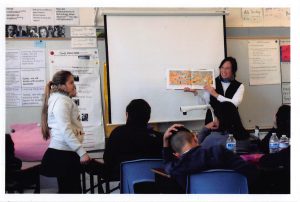summit
Lessons Learned From Funding During 2020

I think we can all agree that 2020 has been a “Terrible, Horrible, No Good, Very Bad” year. As an individual funder, there are an infinite number of worthy funding opportunities. During the spring and early summer, I had trouble holding “a north star” as the funding landscape became increasingly volatile. I found myself continuously asking “How should I respond?” “What are the priorities?” and “What makes sense, without breaking my bank?”
As I have mentioned earlier, grantmaking is iterative and very personal. To reduce donor fatigue and stay focused, here’s some tactics I have implemented within my own portfolio. They are not for everyone, but they work for me and I plan to continue implementing them during the next 12-24 months.
- Continually assess and reassess the landscape. On a regular basis, I ask myself what are the current economic conditions? What is happening to my nonprofit partners? How is government support/relief (CARES, PPP, etc.) affecting their operations? And what could change in the next 12-24 months that might influence my funding decisions?
Within my own portfolio, many of my partners are struggling with reduced revenues, higher demand for services, and how to absorb the additional costs associated with responding to COVID-19. Longer term, I worry about what will happen when government relief and rent moratoriums expire, as well as how the state will weather increased expenses from both COVID and natural disasters.
- Make a conscious decision to increase funding for relief. During times of extraordinary crisis, I believe it is important to ensure my foundation is responding to the best of its ability to the current context. Relief is not sacrificing my larger philanthropic goals; it’s about helping people and communities “where they are at,” as opposed to “what I think should happen.”
As a result of the pandemic and associated economic consequences, I increased my foundation’s planned annual spend by more than 60%. Additional grants were used to support the local food bank, provide rent relief, and fund emergency scholarships. Funds were also used to help some of my nonprofit partners pivot their services and sustain themselves through the pandemic.
- Create internal “Theories of Relief” statements when my foundation is providing economic relief. Sometimes “relief” feels like it is not a strategic or highly leveraged use of philanthropic dollars. But through experience, I have learned that relief can help beneficiaries solve specific problems, as well as enable them to stay on track during difficult times. With this in mind, I craft internal statements about how and why I made the grant. These statements remind me why I’m making a particular decision and what I’m trying to accomplish with the dollars. For each funding decision, I think about the following questions:
- Who is my target population?
- What specific problems are they facing?
- Financial
- Food, job, or housing security
- Internet access
- Staying in college
- What is the best way to provide support/assistance?
- Who is in the best position to distribute the necessary services?
For example, I decided to fund emergency scholarships at 3 universities. The purpose of these scholarships is to support students who might delay their studies or struggle with completing their degree due to uncertain family finances, distance learning, or lost summer internships. While I have funded an independent scholarship in the past, I felt that using my current higher education partners was the most expedient and effective way to distribute the dollars as they have the infrastructure and connection to the pool of students that I am most concerned about.
- Engage my current grantees in a dialogue about how to proceed in 2020. Through conversations and email exchanges, jointly agree to:
- Maintain the current path;
- Convert project grants to general operating support;
- Accelerate planned multi-year gifts into the current year; or
- Re-prioritize and cancel grants that may not be relevant or “doable” in the current context.
Some of the questions that were particularly helpful were:
- How has 2020 impacted you, your organization, and the people you serve?
- How has demand for your services changed? How many people is your organization serving?
- What services did you have to temporarily change or close?
- What is new? What is different?
- Where would my dollars be of most assistance?
- What do you anticipate will change in the next 6-12 months and what is your plan to respond?
As a result of these conversations, one of my partners decided to cancel a current project, accelerate their multi-year payments, and redeploy the dollars to expand training opportunities for nonprofit executives. Two of my partners opted to use some or all of their funding to help fund their internal organizations. The remainder of my partners maintained the status quo or redirected their dollars to support/assist the higher volume of clients.
- Leverage grant activity by participating in matches. In many, if not most of these areas, collective action and pooled dollars are helpful. This year, the scope and scale of disruption is so great that no one donor can move the needle and provide adequate relief or support. Well-designed matches can leverage the foundation’s dollars by expanding the pool of participating donors.
My foundation helped fund or participated in five matching grant campaigns, including the #HalfMyDAF effort and a matching grants campaign at our local food bank. Each of these efforts significantly increased both the number of donors and the amount of money that were raised for the organization. Key success factors included a large enough pool of potential donors, a well-publicized launch, and a compelling case statement.
I’m not sure we can endure another 2020 without the government stepping up and meeting the basic needs of our country. That said, during the interim, I believe individual donors and foundations can continue to play an important role in providing necessary support and relief.
